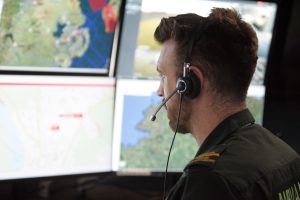
During 2024/2025, NIAS received a total of 232,147 calls and arrived at the scene of an incident on 173,695 occasions.
As a regional ambulance service we operate from one Emergency Operations Centre (EOC) Centre in Belfast. Every time we receive a 999 call from a member of the public, our call handlers known as Emergency Medical Dispatchers use advanced bespoke software systems to assess 999 calls based on the clinical/medical condition of the patient as provided by callers. These systems also allow our Ambulance Control staff to provide those making a 999 call with pre-arrival medical advice in advance of the ambulance arriving with them. It also permits us to prioritise calls to ensure those in need receive the appropriate response.
The 5 call categories are as follows:
Category 1 (C1) – potentially life-threatening injuries and illnesses
Category 2 (C2) – serious but non-life-threatening emergency calls
Category 3 (C3) – urgent calls
Category 4 (C4) – less urgent calls
Category 5 (C5) – hear and treat
When you make an emergency call, our dispatchers will ask you a series of questions to triage your call with the aim of determining what response would be most appropriate for your situation. The overarching principle is that we aim to get to our sickest patients the quickest.
Life-Threatening Emergencies
In life-threatening and potentially serious emergencies, an ambulance with two crew members are often expected to arrive, however, it is possible that you could be treated by a rapid response Paramedic in an RRV. An ambulance may or may not arrive after the RRV, depending on whether it is needed or not.
If you live in a rural area, the first person to arrive on scene may be a Community First Responder. They are a member of the public, trained to provide life-saving treatment to people in their local community while waiting on an ambulance or RRV.
Non-Life-Threatening Emergencies
In a non-life-threatening urgent emergency, you may be treated by an ambulance crew or RRV. In some cases, you may be further triaged by a clinician from our Clinical Support Desk within our Emergency Ambulance Control room, which will assist in determining the type of resource we need to send to you, if required.
In each of these situations, please listen to our staff and follow their advice. Arriving by ambulance does not get you through to the Emergency Department queue any quicker.
